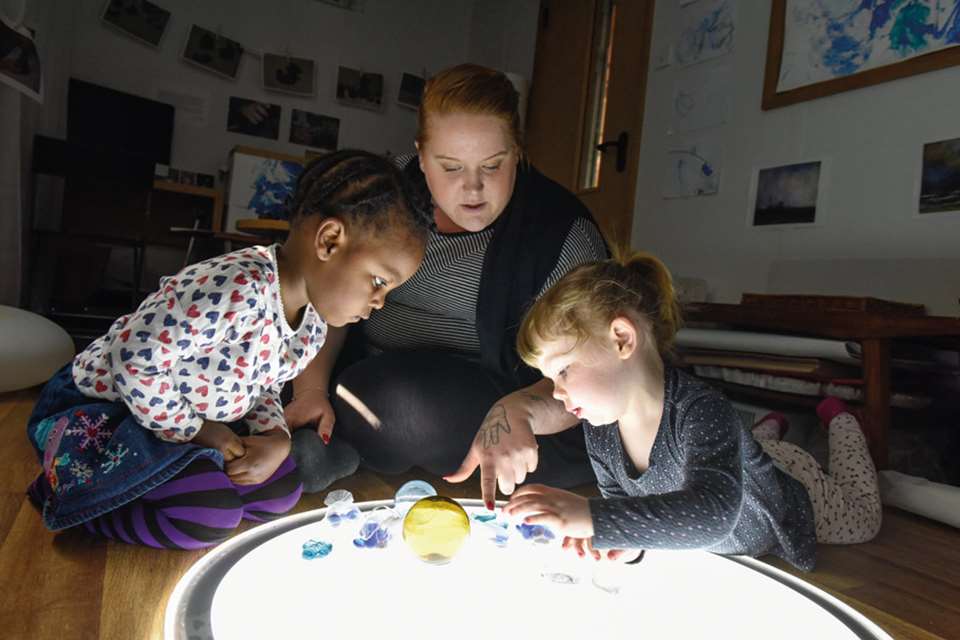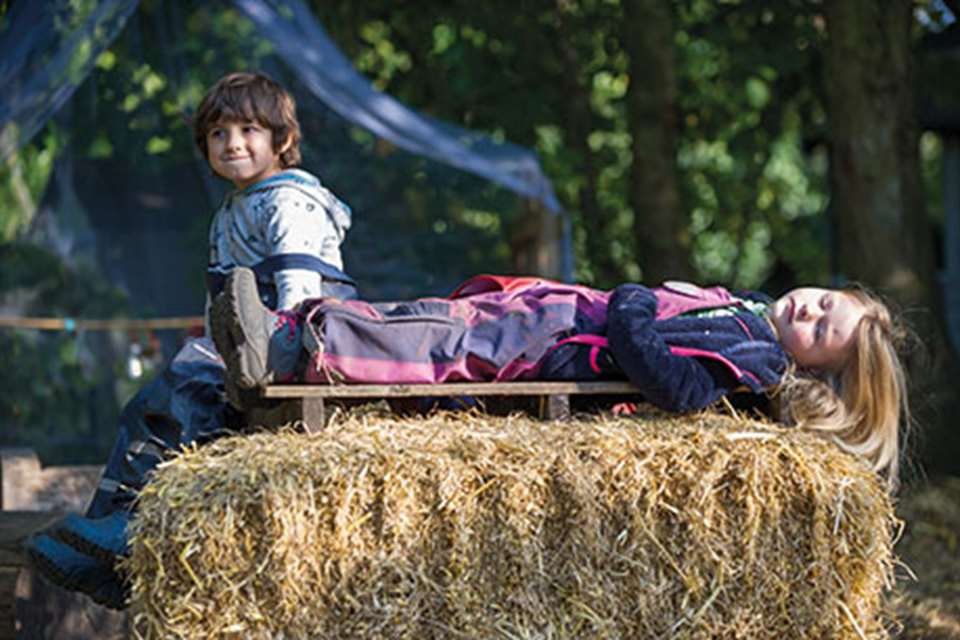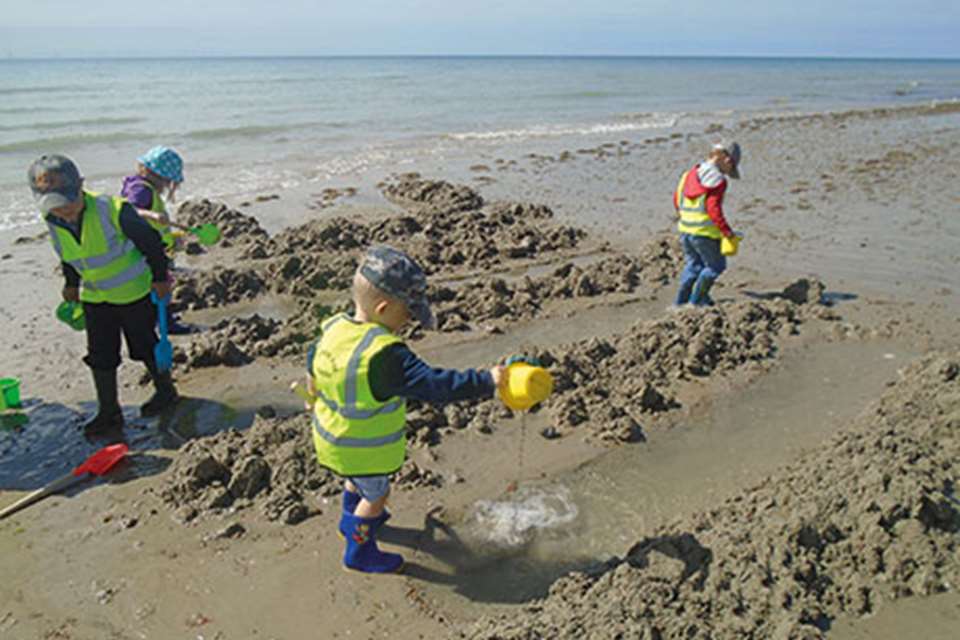Mindfulness - And breathe…
Monday, October 29, 2018
Children’s well-being can be greatly improved through practising mindfulness outdoors. Annie Davy explains how settings can go about this

Download the PDF of this article
When we slow down, become fully present and attentive to young children’s moment-by-moment interests, it makes a hugely positive difference to the quality of their play and learning. There is significant research evidence about mindfulness practice supporting better mental health and well-being, reducing stress and increasing cognitive functioning. Mindfulness is about making things simpler, more focused, and less busy or distracted. Like most things, the more you practise, the easier and more natural it feels.
‘We don’t have enough time and the workload is too much’ is the frequent cry of many early years practitioners. Our lives are full of things we feel we should or must do – paperwork, emails, records, assessments, meetings, training – and that is just at work!
The funny thing about time is that the more pressure we are under, the more time seems to run away from us. When we slow down, take the pressure off and become more fully ‘in’ the present moment, then our sense of the time can expand and become more spacious.
Mindfulness is not about filling or emptying the mind. It is about creating more clarity. Imagine a glass of muddy water full of sediment from the pond. If left for a few hours of stillness, it will become clearer as the sediment sinks to the bottom of the glass. It can be like that for our minds. When the sediment of our everyday thoughts, our ‘mind chatter’, settles, our minds can clear a little, giving us greater capacity to focus calmly, work more effectively, pay better attention to others, and to enjoy life.
Increasingly, schools and early years settings are building mindfulness into teams’ professional development, weekly routines and practice, with benefits to both practitioners and children (see more information). Here are some ideas on how you can incorporate into your practice the four As of mindfulness: Awareness, Attention, Attunement and Affordance.
AWARENESS
There are many ways to develop awareness. One starting point can be just slowing down and experiencing stillness sometimes. Ask yourself: When do your children ever see anyone sitting still? By sitting still regularly, you learn to calm your mind and body. Doing this outdoors is particularly wonderful because you can use the sights and sounds of nature to help you focus and settle. You may be able to breathe more deeply, and feel restored by the nature around you. It is recommended that you practise ‘sit spotting’ over a period of time in your own life before attempting it with children.
Start by finding a place –preferably outdoors – where you feel safe and relaxed and that you can visit often. Simply sit comfortably and become aware of yourself, your breath and everything around you. There is nothing else to do (although smiling a little to yourself sends good messages to your brain!). Visit the spot for a few minutes regularly – every day if you can.
In practice: sit spotting
Very young children and even babies can sit on your lap or lie on a rug next to you while you are sit spotting and will quickly notice the different quality of your attention. Older children can be encouraged to do their own sit spotting:
Give each child a cushion or carry mat with waterproof backing, a square of carpet or a piece of foam.
Each child should choose their own spot – and might need a little time in finding it. Once chosen, encourage them to sit on their cushion, breathe deeply, look and listen. It can be helpful to ask the children to find a spot for a favourite teddy. Where would teddy be comfortable? Which area would he like to sit in? What do they think he will be able to see/smell/hear from there? And can they show teddy what to do?
Initially, the children should sit on the spot for just a minute or two, then extend the amount of time as they get used to it.
Then gather the children together to talk about how they felt and what they noticed while sitting in their spot.
Some children will take to and love this exercise straight away; others may find it more challenging. Don’t emphasise stillness if children find this difficult. Just gently encourage them to breathe, look and listen quietly.
ATTENTION
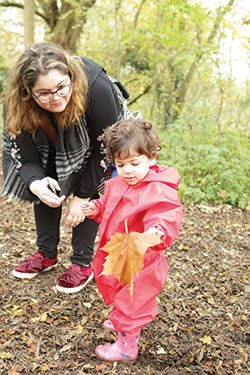 Attention comes from focusing on what is needed right now. If we slow down and focus on how we are breathing, this can help us direct our attention better. A baby or young child will notice your breathing as you hold them. They will know whether you are calm, anxious or upset. Breathing gently and slowly with long outbreaths will slow your heart rate and make you calmer.
Attention comes from focusing on what is needed right now. If we slow down and focus on how we are breathing, this can help us direct our attention better. A baby or young child will notice your breathing as you hold them. They will know whether you are calm, anxious or upset. Breathing gently and slowly with long outbreaths will slow your heart rate and make you calmer.
You can also focus attention using your senses: hearing, sight, touch, smell and taste. There are many mindfulness practices related to each sense. Hearing can be a good one to start with. When you go out in nature, or practise ‘sit spotting’, stop and listen: what can you hear close by and far away? Birds? Insects? Traffic? Voices?
In practice: creating a pause
A mindfulness chime can be used to create pauses in a busy day or at the start of group time. The chime signals an invitation to ‘stop, breathe, notice’. With children, you might encourage them to think ‘stop, breathe, listen’. How long can they hear the sound of the bell reverberating?
Babies and toddlers will detect the change in atmosphere when the bell rings and all the adults stop, fall quiet and pay attention – and they will respond accordingly.
Older children can be encouraged to ‘stop, breathe, look, listen’ when the bell rings, and to use their sense ‘doorways’ (eyes, ears, feet and hands) to notice what is going on in the moment. Explain that the pause is a time in which to re-energise before carrying on what they were doing. It is a bit like musical statues, but remembering to breathe as well as be still. Unlike musical statues, there is no competition or getting it wrong!
ATTUNEMENT
Attunement is about aligning your attention with that of another. This means using all your senses to tap into what a particular child, or group of children, is experiencing at any moment. It relies on your ability to pick up on non-verbal cues and the capacity to ‘see’ the world from the point of view of the child. What are they thinking and feeling right now? Nature provides many opportunities for companionable explorations using all the senses.
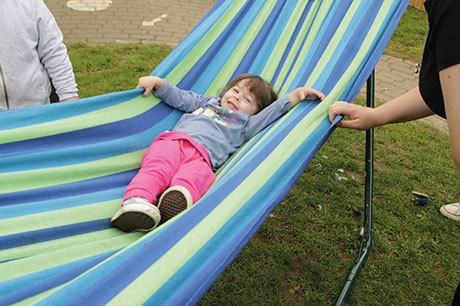
In practice: finding rhythm with under-twos
The rhythm that comes with rocking and singing with babies and toddlers outdoors, or sharing rhymes with them as you walk, has the immediate effect of calming them. If you have enough space, sway gently in a hammock with a child, humming, singing together.
AFFORDANCE
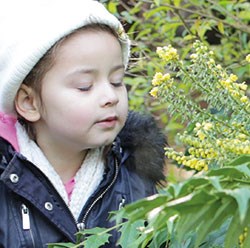
‘Affordance’ is the invitation that an object or something in nature offers us – to stop and stare, to explore, to play. Whatever the outdoor environment, nature ‘affords’ us so much variety and abundance in each season – but we can easily miss it or crowd it out with too much plastic ‘stuff’, noise or busyness. Instead, pay attention and honour the moment when a child sees a rainbow, an acorn, a squirrel, the setting sun.
In practice: sensing nature
Draw children’s attention to the beauty of nature but also give them time and space to ‘drink it in’. If you live or work in a town or city and have limited views of the sky:
Lie on a blanket with children and watch the shapes of clouds.
Walk up a hill to see how much more sky you can see.
On walks and outings, take regular pauses to stop, breathe, listen and look up and down. Smell the flower, watch the ant, listen to the bird, feel grass beneath your feet.
Always allow children time in their outdoor play to stop, look and breathe in their surroundings as part of slowing down and becoming mindful. It helps us to appreciate what we have and can be grateful for – our common heritage of the natural world around us.
Mindfulness: origins and sources
The aim of mindfulness practice is to enable us to experience more peace, greater balance and joy in our lives and those around us. Mindfulness has its origins in Buddhist philosophy, but is practised by people of any faith and those with none.
Two evidence-based and formalised approaches to mindfulness developed in recent years in the western world are Mindfulness-Based Stress Reduction (MBSR) and Mindfulness-Based Cognitive Therapy (MBCT), both of which are taught over a number of sessions and are completely secular in nature. See http://mbct.co.uk/the-mbct-programme
MORE INFORMATION
For more on mindfulness and mindfulness training, visit: https://mindfulnessinschools.org and https://bemindful.co.uk
A Sense of Place: Mindful practice outdoors by Annie Davy will be published by Bloomsbury in the spring
Annie Davy is co-ordinator of Flo’s - The Place in the Park, www.flosoxford.org.uk
Thanks to children and staff of Grandpont Nursery School and Childcare, Oxford for their inspiration


